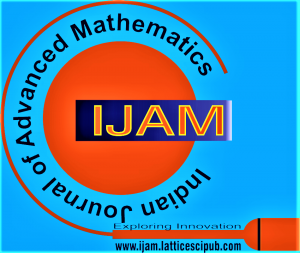![]()
On Solving a Quadratic Diophantine Equation Involving Odd Powers of 17
J. López-Bonilla1, R. Sivaraman2
1Prof. J. López-Bonilla, ESIME-Zacatenco, Instituto Politécnico Nacional, Edif. 4, 1er. Piso, Col. Lindavista CP 0778, CDMX, México.
2Dr. R. Sivaraman, Associate Professor, Department of Mathematics, Dwaraka Doss Goverdhan Doss Vaishnav College, Chennai (Tamil Nadu), India.
Manuscript received on 26 January 2024 | Revised Manuscript received on 06 February 2024 | Manuscript Accepted on 15 April 2024 | Manuscript published on 30 April 2024 | PP: 1-3 | Volume-4 Issue-1, April 2024 | Retrieval Number: 100.1/ijam.A116504010424 | DOI: 10.54105/ijam.A1165.04010424
Open Access | Editorial and Publishing Policies | Zenodo | OJS | Indexing and Abstracting
© The Authors. Published by Lattice Science Publication (LSP). This is an open-access article under the CC-BY-NC-ND license (http://creativecommons.org/licenses/by-nc-nd/4.0/)
Abstract: Diophantine Equations, named after the ancient Greek mathematician Diophantus, play a vital role not only in number theory but also in several branches of science. In this paper, we will solve one of the quadratic Diophantine equations where the right-hand side is an odd positive integral power of 17 and provide its complete solutions. The method adopted to solve the given equation is based on the concept of the polar form of a particular complex number. This concept can be generalised to solve similar equations.
Keywords: Quadratic Diophantine Equation, Polar Form, Euler’s Formula, Positive Integer Solutions.
Scope of the Article: Number Theory
